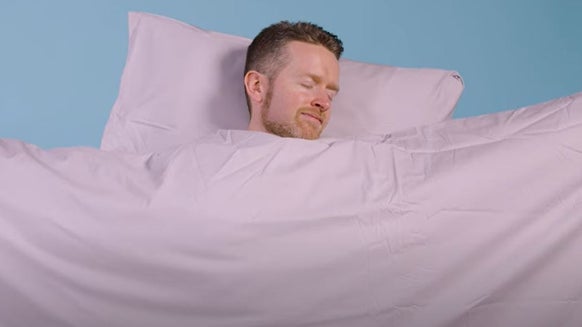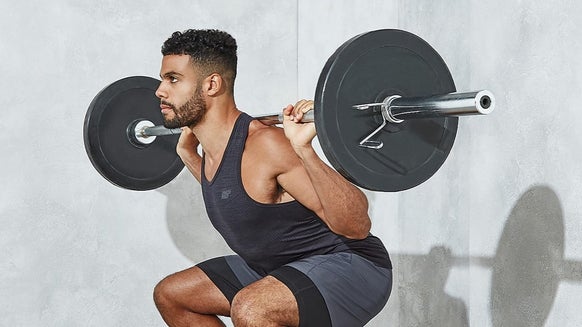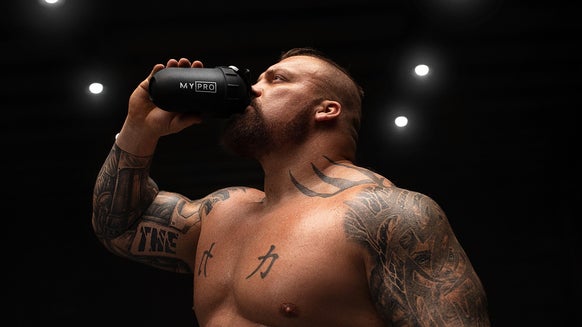Written by Alex Simpson
FST-7 Training
For those of you who are familiar with professional bodybuilding, many of you will instantly recognise the name ‘Hany Rambod’. Also known as the pro-creator, Hany earned himself this nickname due to the fact that he established a reputation as being one of the most effective personal trainers and coaches in the entire world. He quickly gained a reputation for helping countless amateur bodybuilders to transform their physiques and earn themselves their pro cards. He has worked with some of the biggest names in the bodybuilding and celebrity worlds, including Dwayne ‘The Rock’ Johnson, Jay Cutler, and Phil Heath. Phil and Jay, who between them currently hold 9 Mr Olympia titles, both credit Hany as being a huge influence in them winning their numerous titles. One of the reasons why Phil Heath, Jay Cutler, and countless other bodybuilders have been able to build title-winning physiques with Hany, is down to his world-famous FST-7 training program.
What is FST-7?
FST-7, also known as fascia stretch training, is a training principle created by Hany Rambod, that is designed to provide intense muscle pumps and size. The basic idea behind FST-7 is that, on the final set of certain exercises, you will perform 7 working sets to target the body part that you want to grow. The training principle is based upon a theory which states that a person is ordinarily only able to build X amount of muscle based upon genetics, and the thickness of the fascia which surrounds the muscle. So, if you imagine a person with a thicker fascia covering their muscle, obviously they will be less likely to build as much mass as a person with thin fascia, because it makes targeting the muscle that much tougher, as you have to get through the fascia tissue. The training places an emphasis on strengthening the muscles, whilst using the 7 working set technique to stretch the fascia and cause it to expand, via the high volume training. The idea here is that with such a high volume at the end of your training, you can get oxygen and nutrient-rich blood into the muscles in higher quantities, resulting in impressive muscle pumps that not only look great, but also cause the fascia tissue to expand.
Only One Part Of The Puzzle
Though FST-7 is arguably the most well-known form of fascia stretch training, in reality there are many hugely popular stretch training programs currently being utilised, including ones created by John Parrillo, and Dante Trudel, who created DC training. Both of these guys incorporated very intense forms of fascia stretch training into their workout programs, and both of which place an emphasis on high volume training. The difference here is that, as opposed to elongating the muscle and stretching the fascia, FST-7 stretches the fascia from within, by causing it to increase in volume and to expand. If you imagine your fascia muscle tissue as a sponge, and your blood as water, when you force more water into the sponge, it expands and swells as it fills up, which is basically what happens when your fascia tissue fills up with blood, giving you amazing muscle pumps in the process.
Heavy or Light?
Obviously, as you are finishing your workouts off with 7 working sets of 8 – 12 reps (unless stated otherwise) you can’t expect to perform your final 7 working sets with an especially heavy weight. With that being said however, you should perform the first part of your workout with relatively heavy weights, as heavy weights are what are going to shock your muscles into new growth. Big muscles are generally strong muscles, so you should try to train relatively heavy for the duration of your workout, and what’s more, you should aim for 8 – 12 reps like usual. If you struggle to hit 8 reps on your first set, the weight is too heavy, but if you are consistently hitting 12 and could easily perform a few more, you should go slightly heavier, as you ideally want to be struggling by the time you reach 10 reps or so. Heavy training builds density and thickness, whilst high volume will result in full and rounded muscles.
Ideal Exercises
If you’re looking to increase your muscle mass via fascia stretch training, for your final 7 sets, you will need to ensure that you stick with isolation exercises, unless you are really experienced, in which case you could choose a compound exercise, which would be absolutely brutal. Remember, with fascia stretch training, the idea is that you are targeting stubborn body parts and are forcing them to grow whilst creating crazy pumps in the process. Compound exercises target multiple muscle groups at once, so ideally you want isolation exercises instead. What’s more, compound exercises often can throw off your balance as you begin to struggle, whereas many isolation exercises are utilized with machines, making them much easier for perfect form. What’s more, if you need to add/remove weight, simply moving a pin up or down is much quicker and easier than removing and swapping plates and replacing collars etc. As this form of training is so brutal, you should only work one body part in this way, once per week, as recovery does take longer than usual.
A Typical FST-7 workout
The best way to get an idea of what something is and how it works is to see it, so here’s a look at a typical FST-7 workout designed to target the pectoral muscles in your chest:
1) Flat bench barbell press: 4 sets of 8 – 12 reps
2) Incline dumbbell press: 4 sets of 8 – 12 reps
3) Push-ups: 4 sets of 8 – 12 reps
4) Incline cable flyes: 7 sets of 8 – 12 reps

Alice Pearson is a UKVRN Registered Associate Nutritionist and UK Anti‐Doping accredited advisor, having obtained a Bachelor’s of Science in Nutrition and a Master’s of Science in Sport Nutrition. She has a specialist interest in the use of sports supplements for improving health, fitness, and sport performance. Alice has experience working with both amateur and elite athletes, including providing nutritional support to Tranmere Rovers FC and Newcastle Falcons Rugby Club. Her nutritional guidance is always supported by evidence‐based research, which she keeps up to date through continuing professional development and independent learning. In her spare time, Alice loves travelling, hitting the gym, and getting stuck into a good book. Find out more about Alice's story here.






